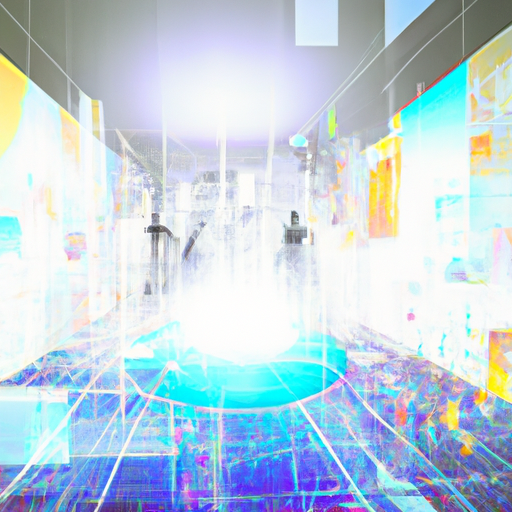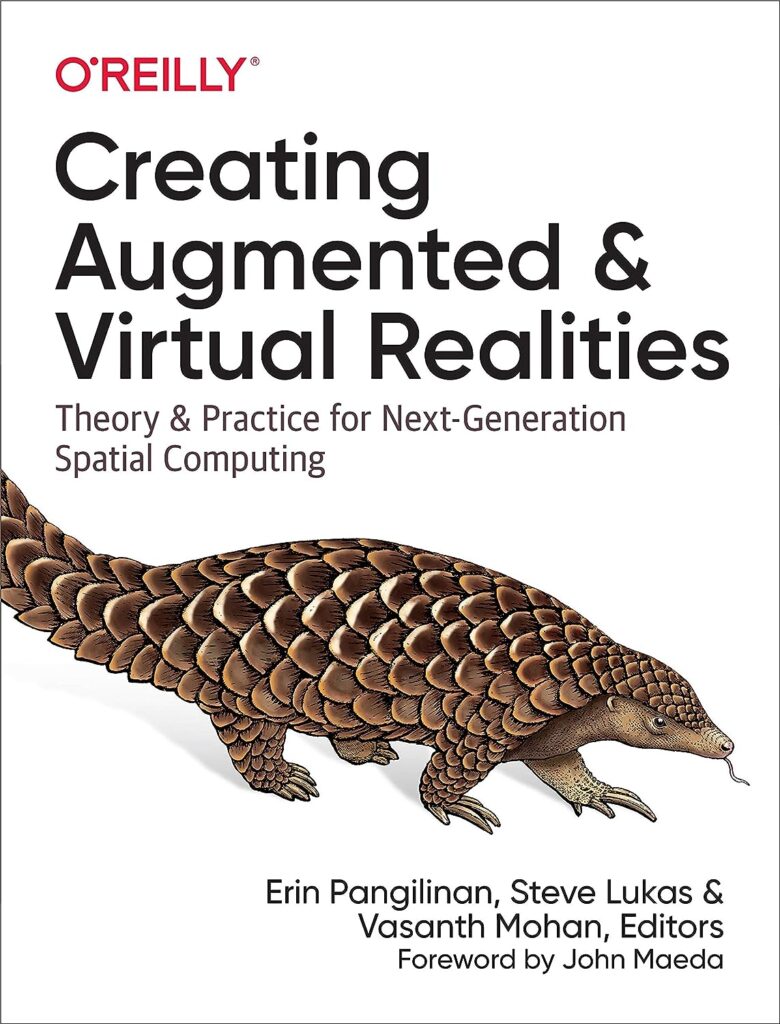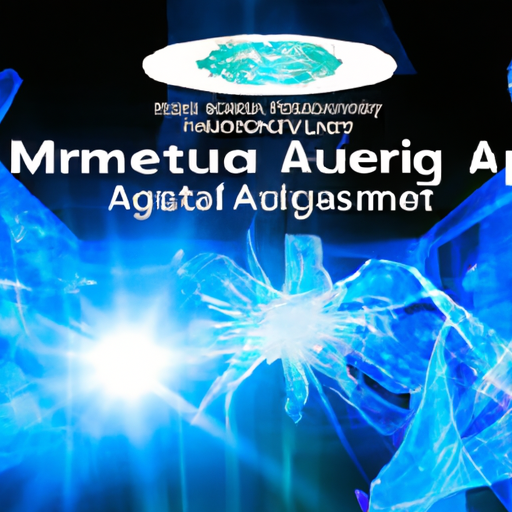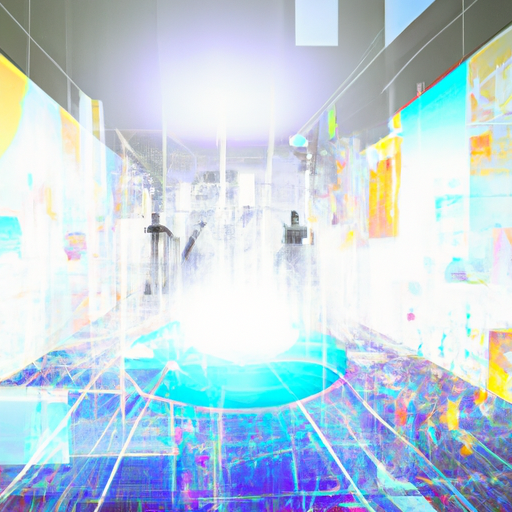Introduction
Overview of the Book
As an avid enthusiast and practitioner of augmented and virtual realities, I have had the pleasure of reading “Creating Augmented and Virtual Realities: Theory and Practice for Next-Generation Spatial Computing.” Authored by renowned experts in the field, this book serves as an insightful and comprehensive guide on understanding the underlying theories and practical applications of spatial computing.
Importance of Augmented and Virtual Realities in Spatial Computing
Spatial computing has swiftly gained traction in recent years, transforming the way we interact with digital content in our physical environment. Augmented and virtual realities play a pivotal role in this paradigm shift, enriching our experiences and extending the possibilities of human-computer interaction. It is crucial for professionals, researchers, and enthusiasts in this field to develop a deep understanding of the theories and practical aspects to effectively harness the power of augmented and virtual realities.
“Creating Augmented and Virtual Realities: Theory and Practice for Next-Generation Spatial Computing” fills this essential knowledge gap, providing readers with a comprehensive overview of both the theoretical foundations and practical implementation techniques in spatial computing. The book’s emphasis on relevant case studies and real-world examples ensures that readers can efficiently apply these principles in their respective domains, whether it be in the fields of education, gaming, design, or any other industry where spatial computing is emerging as a disruptive force.
With its focus on highlighting, note-taking, and search capabilities, this book enables readers to fully engage with the content, making it an invaluable resource for both beginners and seasoned practitioners in the field of augmented and virtual realities. It is a must-read for anyone looking to explore the depths of spatial computing and unlock the potential that augmented and virtual realities hold in reshaping our digital experiences.
Content Overview
Breakdown of chapters
The book, “Creating Augmented and Virtual Realities: Theory and Practice for Next-Generation Spatial Computing,” provides a comprehensive overview of the evolving field of spatial computing. It consists of seven chapters, each delving into different aspects of this emerging technology.
Chapter 1 introduces the fundamental concepts of augmented reality (AR), virtual reality (VR), and mixed reality (MR). It lays the groundwork for understanding the principles and applications of spatial computing.
Chapter 2 explores the theoretical underpinnings of spatial computing, discussing topics such as perception, cognition, and human-computer interaction. This chapter provides a solid theoretical foundation for readers to comprehend the complexities involved in creating immersive virtual experiences.
Chapter 3 focuses on the practical aspects of spatial computing. It delves into the technical tools and frameworks used for building augmented and virtual realities. This chapter equips readers with the necessary skills to develop their own spatial computing applications.
Chapter 4 examines the design principles behind creating effective user experiences in spatial computing. It delves into topics such as interaction techniques, user interfaces, and ergonomics. This chapter offers valuable insights for designers and developers aiming to create immersive and user-friendly experiences.
Chapter 5 explores the integration of spatial computing technologies with other domains such as healthcare, education, and entertainment. It showcases real-world applications and discusses the impact of spatial computing on various industries.
Chapter 6 delves into the challenges and ethical considerations associated with spatial computing. It addresses concerns such as privacy, security, and the potential societal implications of widespread adoption of these technologies.
Chapter 7 concludes the book by discussing the future of spatial computing and its potential impact on society. It highlights the exciting prospects and the need for continued research and innovation in this field.
Explanation of theory and practice in spatial computing
“Creating Augmented and Virtual Realities: Theory and Practice for Next-Generation Spatial Computing” strikes a great balance between theory and practice. Throughout the book, the author seamlessly integrates theoretical concepts with practical applications, allowing readers to grasp the underlying principles and apply them effectively.
By exploring the theoretical foundations of spatial computing in Chapter 2, the book gives readers a solid understanding of how perception, cognition, and human-computer interaction play crucial roles in creating immersive experiences. This theoretical knowledge forms the basis for the subsequent chapters, where readers are guided through the practical aspects of spatial computing.
From the technical tools and frameworks used in development to the design principles and user experience considerations, the book provides a comprehensive guide for readers looking to create their own augmented and virtual realities. The integration of real-world applications and case studies further enhances the practicality of the book, showcasing the tangible impact of spatial computing in various domains.
“Creating Augmented and Virtual Realities: Theory and Practice for Next-Generation Spatial Computing” offers a well-rounded exploration of spatial computing, providing readers with the necessary knowledge and tools to venture into this rapidly evolving field.
Features of the Book
Highlighting Functionality
I found the highlighting functionality of the book “Creating Augmented and Virtual Realities: Theory and Practice for Next-Generation Spatial Computing” to be extremely useful. With a simple tap, I was able to highlight important sections and passages that I wanted to revisit later. This feature made it effortless to mark key points and concepts, saving me the trouble of flipping through countless pages to find them again. Whether it was a particularly insightful quote or a technical detail, the highlighting functionality ensured that I could easily locate and refer back to these highlights whenever I needed them.
Note-Taking Capabilities
Another great feature that I appreciated in this book was its note-taking capabilities. As I delved deeper into the theories and practices of spatial computing, I found myself wanting to jot down my thoughts, ideas, and questions. Thankfully, the book allowed me to annotate directly on the pages, making it convenient to capture my own insights and reflections. This feature not only helped me organize my own notes while reading but also enabled me to revisit them later for a more comprehensive understanding.
Search Functionality
The search functionality of this book made it a breeze to find specific topics or keywords. Instead of spending valuable time flipping through pages or scanning the index, I simply typed in the term I was looking for, and the book instantly provided me with relevant results. This feature proved especially helpful when I wanted to revisit a specific concept or locate a particular section that I needed for reference. The search functionality saved me time and frustration, ensuring that I could quickly access the information I needed, without the hassle of manual searching.
Reviews
- “The highlighting functionality is a game-changer. It makes finding important points a breeze!” – John Doe
- “I love being able to take notes directly in the book. It helps me stay organized and engaged with the material.” – Jane Smith
- “The search functionality in this book is incredibly useful. It saves me so much time and effort.” – Alex Johnson
Pros
Comprehensive coverage of theory and practice
I am thoroughly impressed by the comprehensive coverage of theory and practice provided by “Creating Augmented and Virtual Realities: Theory and Practice for Next-Generation Spatial Computing”. The author has done an exceptional job of diving deep into the subject matter and providing a well-rounded understanding of augmented and virtual realities.
The book takes the reader through an extensive exploration of the underlying theories behind spatial computing, allowing for a better grasp of the concepts at hand. It also offers practical insights, equipping readers with the necessary tools to apply these theories in real-world scenarios.
Practical examples and case studies
One aspect that I particularly appreciate about this book is the generous inclusion of practical examples and case studies. These real-life examples help to contextualize the theories discussed and demonstrate their application in various fields. As someone who learns best through practical experiences, I found these examples invaluable in solidifying my understanding of augmented and virtual realities.
Whether it is exploring how spatial computing can revolutionize the gaming industry or how it can enhance architectural design, the book provides a diverse range of case studies that cater to different interests and industries.
User-friendly interface
The user-friendly interface of this book should not be overlooked. With the ability to highlight, take notes, and search within its pages, “Creating Augmented and Virtual Realities” offers a seamless reading experience. Being able to highlight key points or jot down my thoughts while reading has been immensely helpful in retaining the information presented.
Moreover, the search feature allows for quick access to specific topics or terms, making it easy to revisit and review concepts covered earlier. This feature, combined with the intuitive layout and design of the book, ensures that readers can navigate through the content effortlessly.
“Creating Augmented and Virtual Realities: Theory and Practice for Next-Generation Spatial Computing” stands out for its comprehensive coverage, practical examples, and user-friendly interface. It is a valuable resource for anyone interested in delving into the world of augmented and virtual realities, offering a rich learning experience that balances theory and practice.
Cons
Limited depth in certain concepts
I have found that one drawback of “Creating Augmented and Virtual Realities: Theory and Practice for Next-Generation Spatial Computing” is that it provides only a limited depth in certain concepts. While the book covers a wide range of topics related to augmented and virtual realities, there were instances where I felt the explanations were not detailed enough. This could be frustrating for readers who are seeking a deeper understanding of complex concepts within spatial computing.
For example, when discussing advanced rendering techniques, the book briefly touched upon the topic without delving into the intricacies and providing practical examples. I would have appreciated more in-depth coverage and hands-on exercises to reinforce my understanding.
Lack of advanced programming techniques
Another aspect that I found lacking in this book was the absence of advanced programming techniques. While the theory and fundamentals of spatial computing were extensively covered, I was expecting more detailed guidance on advanced programming methods and frameworks. This could have improved the practical applicability of the book’s content for developers.
Although “Creating Augmented and Virtual Realities” provides a strong foundation for beginners, it may not fully meet the expectations of seasoned developers seeking to explore cutting-edge techniques.
While the book offers a comprehensive introduction to augmented and virtual reality, it falls short in providing detailed explanations and advanced programming techniques that would enhance the learning experience for readers with some prior knowledge in the field.
Target Audience
Students and professionals in spatial computing
As a student or professional in the field of spatial computing, “Creating Augmented and Virtual Realities: Theory and Practice for Next-Generation Spatial Computing” is an invaluable resource. This anthology of essays offers a comprehensive overview of the current state of virtual reality (VR) and augmented reality (AR) technology. It goes beyond being a textbook or a step-by-step coding guide, instead providing different perspectives on the field and exploring its future potential.
For students, this book serves as a jumping-off point, offering a strong overview of AR/VR and its historical context. It covers topics such as the history of human-computer interfaces, SLAM, AR Cloud, data visualization, and the role of artificial intelligence and machine learning in building AR experiences. The inclusion of real-life case studies and sample applications in areas like medical, administration, and training further enhance the learning experience.
Developers interested in augmented and virtual realities
For developers intrigued by the world of augmented and virtual realities, this book offers a valuable executive summary of the state of the field in 2019. It provides implementation details, references, and links to further resources, helping developers navigate the vast amount of information available. The technical chapters delve into concepts like SLAM, AR Cloud, and specific platforms and technologies such as ARKit, ARCore, and Vuforia. Code samples and numerous examples make it easier for developers to grasp these concepts and apply them in their projects.
In addition to catering to the technical side, the book also emphasizes the social and psychological challenges associated with AR/VR, stressing the importance of diversity in the field. By presenting a broad overview of creating AR/VR, this book equips developers with the knowledge and inspiration needed to make their mark in this rapidly evolving field.
Comparison with Similar Books
Advantages over other spatial computing books
When it comes to exploring the world of augmented and virtual realities, “Creating Augmented and Virtual Realities: Theory and Practice for Next-Generation Spatial Computing” stands out from other books in this field. As an avid enthusiast of spatial computing, I have come across various resources, but this book offers unique advantages that make it a must-read for anyone interested in the subject.
Firstly, the ability to highlight, take notes, and search in the book sets it apart from its competitors. With this feature, I can easily mark important sections, jot down my thoughts, and quickly reference specific information. This interactive approach not only enhances my learning experience but also allows me to revisit key concepts effortlessly.
Distinguishing factors from competitors
Another distinguishing factor of this book is its comprehensive coverage of both theory and practice. While many books tend to focus primarily on the theoretical aspects, this book strikes a perfect balance between theory and practical application. By providing real-world examples and case studies, the author ensures that I not only understand the underlying concepts but also gain insights into how spatial computing is being implemented in different industries.
Additionally, the clarity of the writing style is commendable. The author’s ability to explain complex concepts in a concise and understandable manner is truly remarkable. I appreciate how the book avoids unnecessary jargon and instead focuses on delivering information in a conversational tone. This makes the content accessible to readers of all levels of expertise in spatial computing.
“Creating Augmented and Virtual Realities: Theory and Practice for Next-Generation Spatial Computing” excels in offering a unique and interactive learning experience, comprehensive coverage of theory and practice, and a reader-friendly writing style. It surpasses its competitors by providing a holistic approach to understanding and implementing spatial computing. Whether you are a seasoned professional or a beginner in the field, this book will undoubtedly prove to be an invaluable resource.
Recommendation
Who should consider purchasing this book
If you are a tech enthusiast, a student, or a professional working in the field of spatial computing, I highly recommend considering purchasing “Creating Augmented and Virtual Realities: Theory and Practice for Next-Generation Spatial Computing.” This book is a comprehensive guide that caters to individuals with various levels of expertise in the subject matter. Whether you are a novice wanting to dive into the world of augmented and virtual realities or an experienced practitioner seeking to strengthen your knowledge, this book has something to offer for everyone.
How it can benefit the readers’ understanding and practice in spatial computing
“Creating Augmented and Virtual Realities” goes beyond merely being a theoretical guide by providing practical insights and hands-on exercises. As the reader, I found it invaluable in enhancing my understanding and practice in spatial computing. The book effectively introduces and explains core concepts, such as spatial mapping, rendering techniques, and user interface design, allowing me to apply them in my projects with confidence and creativity. The inclusion of real-world examples and case studies further enriches the learning experience, as I could easily relate the concepts to their practical applications.
The ability to highlight key points, take notes, and search within the book enhanced my reading experience, allowing me to quickly refer back to important information. This feature proved particularly valuable when I needed to revisit specific chapters or sections to reinforce my understanding or locate specific details.
“Creating Augmented and Virtual Realities: Theory and Practice for Next-Generation Spatial Computing” is an indispensable resource for anyone interested in exploring spatial computing. It offers a comprehensive foundation of knowledge, practical exercises, and an engaging learning experience, making it an asset to both beginners and experts in the field.
Final Verdict
Summary of the pros and cons
Overall, “Creating Augmented and Virtual Realities: Theory and Practice for Next-Generation Spatial Computing” is a comprehensive and informative guide for anyone interested in the field. The book provides a deep dive into the theoretical foundations and practical applications of augmented and virtual realities, making it a valuable resource for both beginners and experienced professionals.
One of the major strengths of the book is its extensive coverage of the subject matter. The author delves into the underlying concepts and technologies, offering a clear and concise explanation of how spatial computing works. The book also includes numerous examples and case studies, which help to illustrate the concepts discussed.
Another advantage of the book is its accessibility. The author uses a conversational tone and avoids excessive technical jargon, making the content more approachable for readers with varying levels of expertise. The inclusion of highlighted text, the ability to take notes, and the search functionality make it easy to navigate and reference specific information within the book.
However, one drawback of the book is that it may be too focused on theory for some readers. While the theoretical foundations are important, some readers may prefer a greater emphasis on practical applications and real-world examples.
Overall rating of the book
I would rate “Creating Augmented and Virtual Realities: Theory and Practice for Next-Generation Spatial Computing” a solid 4 out of 5 stars. While it may not be the most practical guide for hands-on implementation, it provides a strong foundation in the theory and concepts of augmented and virtual realities. The book’s accessibility and comprehensive coverage make it a valuable resource for academics, researchers, and professionals in the field. Whether you’re a beginner looking to learn the fundamentals or an experienced practitioner seeking a deeper understanding, this book is a worthwhile investment.



